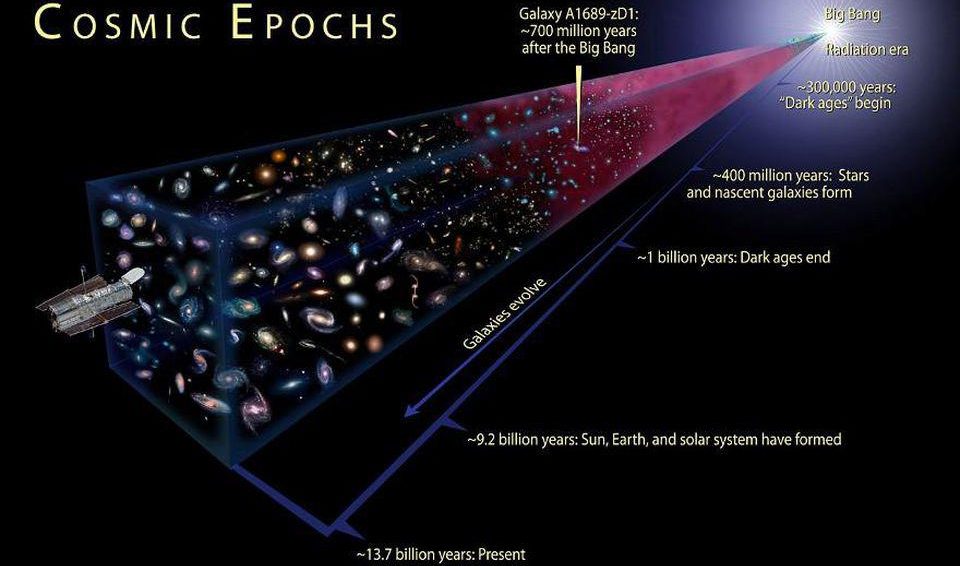Black Hole Mergers To Be Predicted Years In Advance By The 2030s
LISA, the Laser Interferometer Space Antenna, will not only be the space-based successor to LIGO, but will predict black hole mergers up to years in advance.
Across the Universe, innumerable masses are locked in an inevitable death spiral. As white dwarfs, neutron stars, and black holes orbit each other, they travel through the curved spacetime that the other one’s mass creates. Accelerating through this has an inevitable consequence in General Relativity: the emission of gravitational radiation, also known as gravitational waves. Since these waves carry energy away, these orbits eventually decay, leading to an inspiral and merger. Over the past 2–3 years, LIGO has directly detected the very first mergers of black holes and neutron stars, with many more to come. But even with optimal technology, we’ll never get a signal more than seconds in advance of the actual merger.
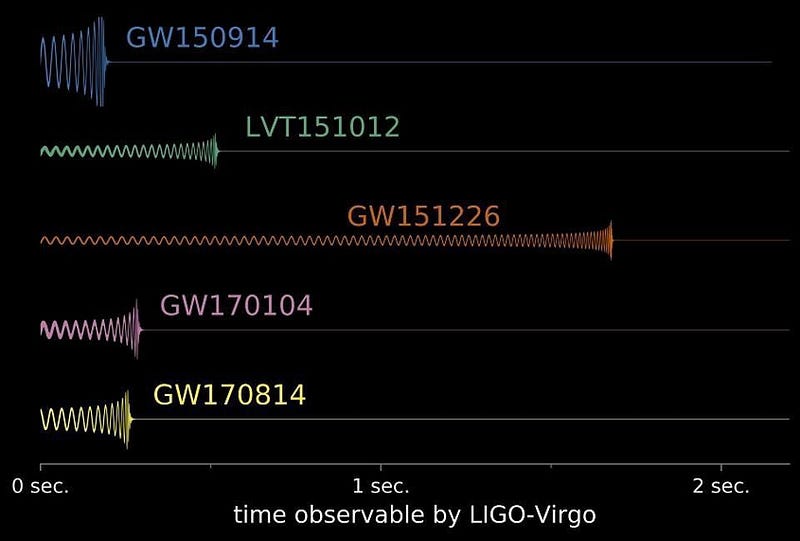
With the launch of LISA, the Laser Interferometer Space Antenna, scheduled for the 2030s, however, all of that is set to change. For the first time, we’ll be able to know exactly when and where to point our telescopes to watch the fireworks from the very start. Here’s the story of how.
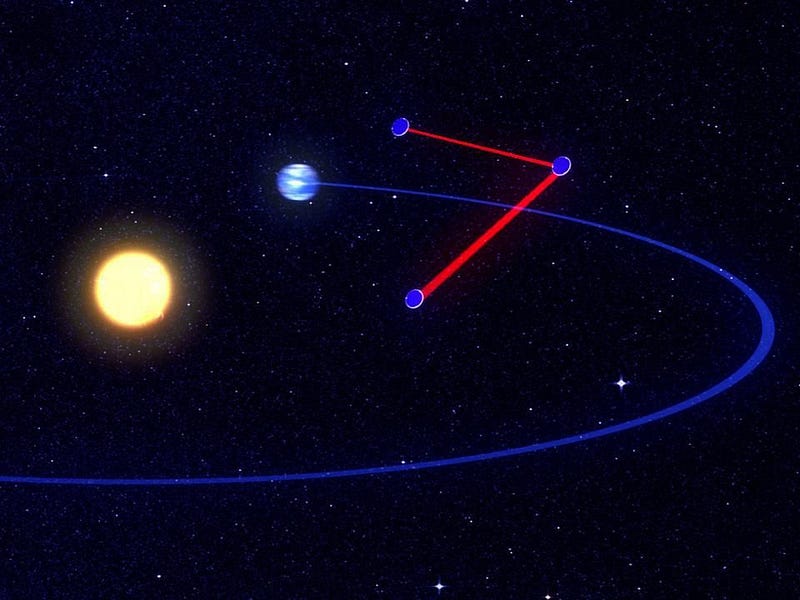
In our Universe, all sorts of astrophysical phenomena take place that generate gravitational waves. Whenever there’s a large mass that either:
- accelerates through a strongly curved region of space,
- rapidly rearranges its shape,
- causes another enormous mass to accelerate-and-fall onto it,
or otherwise alters the fabric of spacetime from its pre-existing state, gravitational energy is radiated away. These ripples travel through space at the speed of light, carrying energy away. The way that energy gets conserved is that the original masses must wind up more tightly bound than they were before: gravitational potential energy gets converted into these gravitational waves.
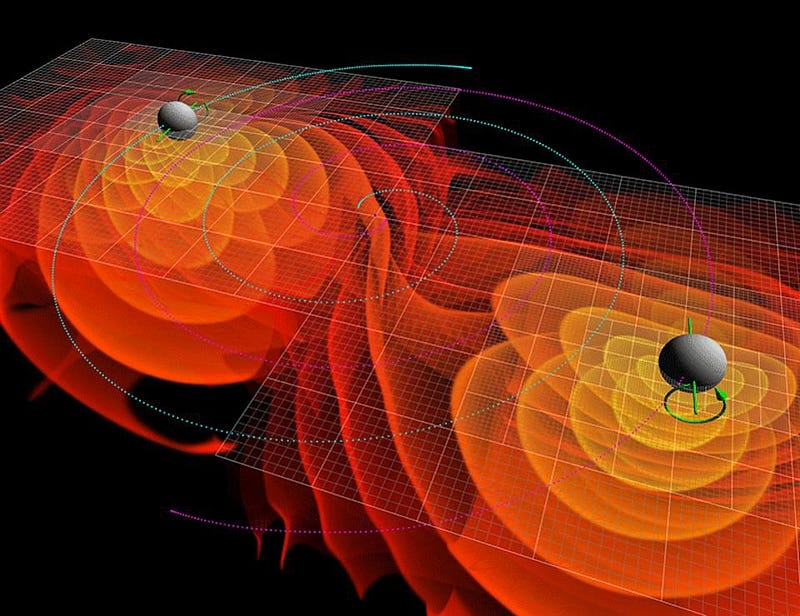
The strongest amplitude signals come from the strongest changes in gravitational fields. This means that large masses accelerating at extremely short distances are the best candidates. Things like neutron star pairs, black hole binaries, supernovae, glitching pulsars, or neutron star-black hole systems are the best candidate systems for a detector like LIGO. These aren’t, however, the strongest signals in the entire Universe; they’re simply the strongest signals at the frequencies LIGO is sensitive to. These gravitational wave signals truly are waves: they have a wavelength and a frequency, depending on, for example, the orbital period of a binary system.
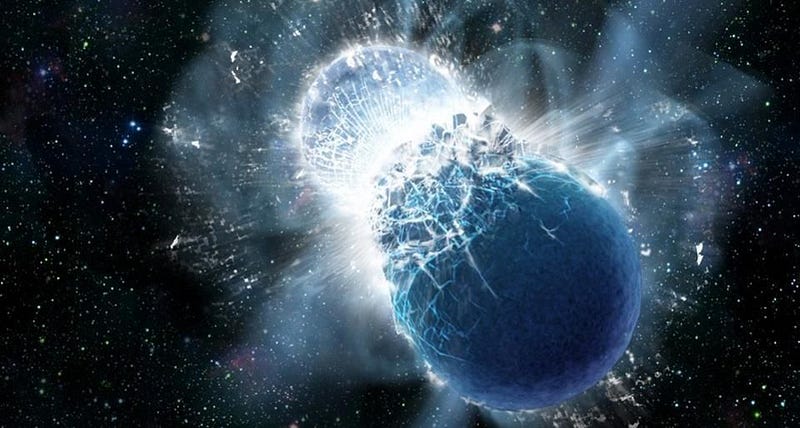
LIGO, with its 4-kilometer arms that reflects light back-and-forth around a few thousand times, is sensitive to phenomena that generate waves with periods of milliseconds. The reason is that light travels thousands of kilometers in just a few milliseconds, so anything with a longer-period orbit will generate waves that are simply too large for LIGO to detect. Supernovae, merging neutron stars, and inspiraling black holes are processes that take minuscule fractions-of-a-second to complete, and hence they’re ideally suited for these relatively small gravitational wave detectors. However, there are plenty of other massive systems — in some cases, far more massive than the ones LIGO can see — that take far longer to complete a period.
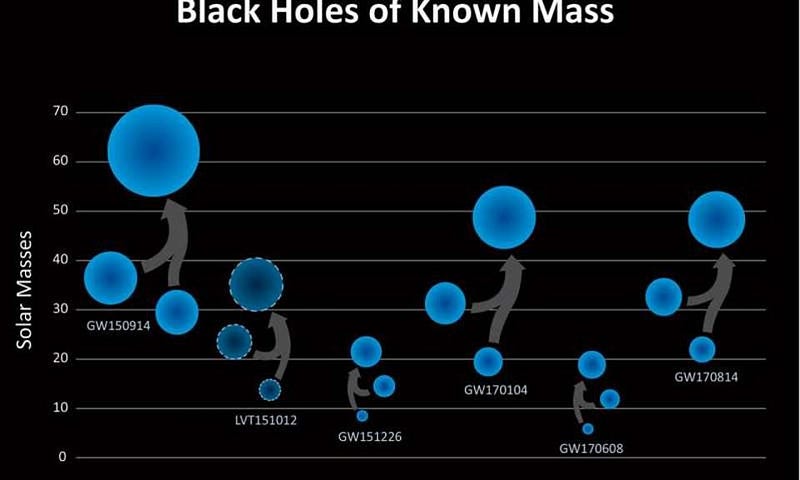
The black holes we’ve seen are only a few tens of times the mass of the Sun; we know there are black holes out there with millions or even billions of times the Sun’s mass. At the centers of practically every galaxy are these supermassive behemoths, and they routinely devour asteroids, planets, stars, or even other massive black holes. However, with such large masses, they have enormous event horizons, so large that even an object revolving at the very edge would take many seconds or even minutes to complete a revolution. LIGO could never be sensitive to such a long-period gravitational wave, as its arms are too short. To see that, we’d need a gravitational wave detector in space: exactly what LISA is going to be.
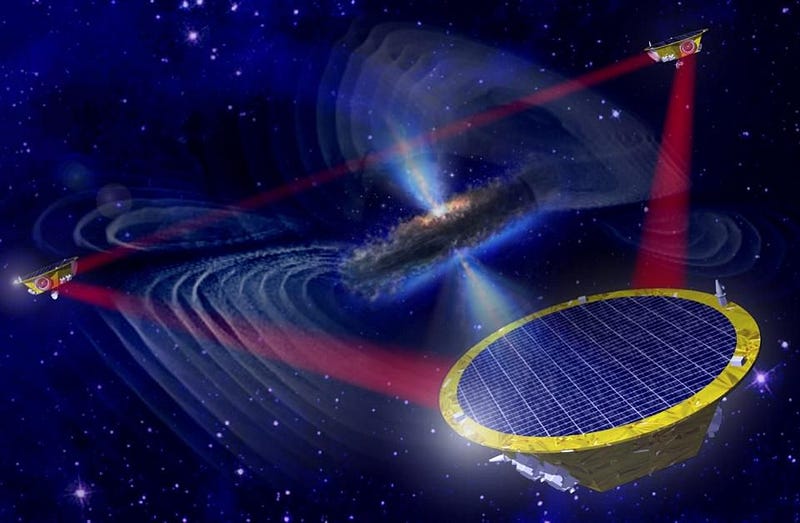
With three spacecraft orbiting one another far away from the Earth, LISA will be sensitive to inspirals and mergers of objects around supermassive black holes: the most reliable and expected source of gravitational waves out there. Mergers or collisions involving two supermassive black holes, as well as smaller objects merging or inspiraling into a lone supermassive black hole, are guaranteed to create gravitational waves with wavelengths many millions of kilometers in size. With an orbiting space antenna and comparably-sized laser arms, however, LISA will be able to see these objects. All of a sudden, objects with periods of minutes-to-hours are within reach.
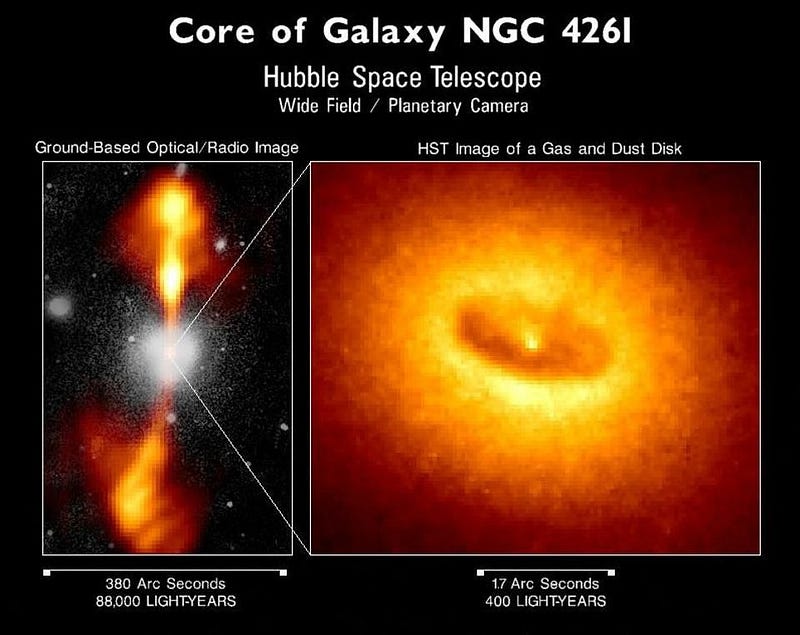
When we detect black hole-black hole events with LIGO, it’s only the last few orbits that have a large enough amplitude to be seen above the background noise. The entirety of the signal’s duration lasts from a few hundred milliseconds to only a couple of seconds. By time a signal is collected, identified, processed, and localized, the critical merger event has already passed. There’s no way to point your telescopes — the ones that could find an electromagnetic counterpart to the signal — quickly enough to catch them from birth. Even inspiraling and merging neutron stars could only last tens of seconds before the critical “chirp” moment arrives. Processing time, even under ideal conditions, makes predicting the particular when-and-where a signal will occur a practical impossibility. But all of this will change with LISA.
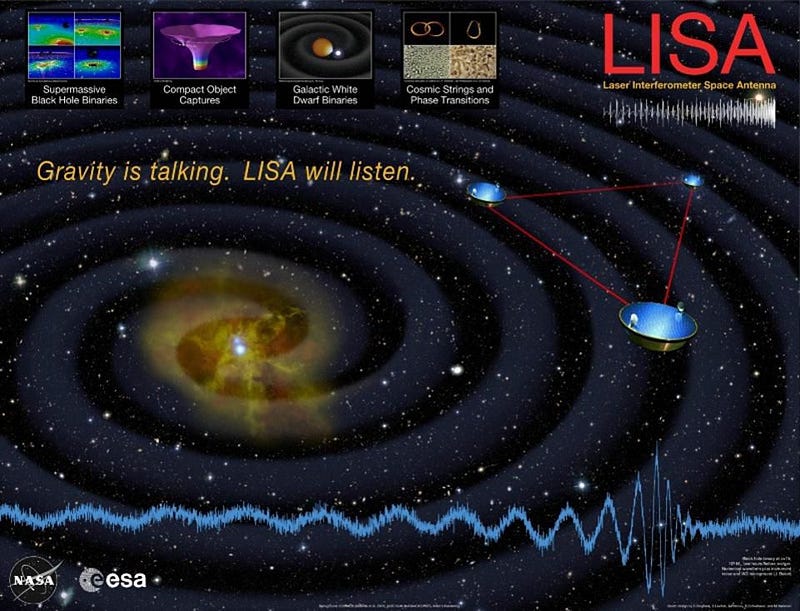
These extreme masses can generate signals of a much greater amplitude at a much lower frequency, meaning that they’ll be detectable in an instrument like LISA not seconds, but weeks, months, or even years in advance. Rather than looking at your data after-the-fact and concluding, “hey, we had a gravitational wave event here a few minutes ago,” you could look at your data and know, “in 2 years, 1 month, 21 days, 4 hours, 13 minutes and 56 seconds, we should point our telescopes at this location on the sky.” It will mean we can make these predictions way in advance, and the era of real-time, predictive, multi-messenger astronomy will have truly arrived.
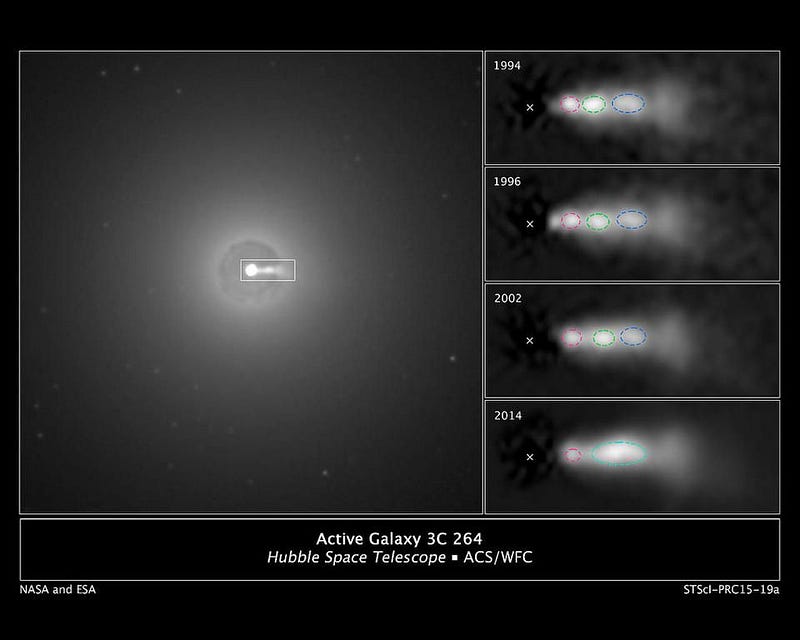
Gravitational wave astronomy, as a science, is still only in its infancy, but it provides a whole new way to look at and study the entire Universe. While LIGO may only be sensitive to millisecond-period events, LISA will extend that to minutes-and-hours, while other techniques like pulsar timing and polarization measurements of the Big Bang’s leftover glow could capture events that take years or decades, or even billions of years, respectively. With LIGO, we have no realistic hope of collecting, processing, and analyzing the data fast enough to tell our telescopes where to point in advance of the critical event; optical astronomy is destined to remain a follow-up only. But with the advent of LISA, we’ll be able to know exact when and where to point our telescopes to get the ultimate cosmic show from the moment an event begins. For the first time, we won’t be reacting to the Universe; we’ll have a bona fide way to predict its most spectacular events ahead of time.
Ethan Siegel is the author of Beyond the Galaxy and Treknology. You can pre-order his third book, currently in development: the Encyclopaedia Cosmologica.


